#sample playback
Explore tagged Tumblr posts
Text
Arturia MicroFreak Review
Hybrid synthesis meets portability in the MicroFreak Stellar Edition A minimal control surface packs multiple engines and effects The Arturia MicroFreak Stellar Edition is a compact hybrid synthesizer that combines a digital oscillator section with an analog 12dB/oct low-pass filter. It features over 20 oscillator types, including wavetable, harmonic, superwave, Karplus-Strong, granular, and…
#analog filter#Arturia#digital oscillator#granular synthesis#Holy Invasion#hybrid synthesizer#MicroFreak#music technology#sample playback
0 notes
Note
There's also an underlying accusation to that question that non-drummers would probably not directly get, even though you did correctly pick up on the rude tone. Not only are they calling the kit flashy, they're also calling him a fake. II's perfectly succinct response to that question was both the actual answer and a shut down (Imagine, if you will, those big, beautiful, blue eyes rolling in his grumpy skull mask. He is among Sleep's eepiest).
'why so many triggers' ' for gates' But what does it mean??? This was before my time 😭 I'm so excited
I don’t have the screenshot so if anyone wants to add, please do!
Basically, in the way that often happens, somebody on Twitter replies to a photo of ii’s setup and went “why so many triggers?” and like trying to say there’s too much shit on his kit, it’s for looks, it’s overkill and too many, just like general dissing energy
And ii, being on twitter and ready to fight at a moments notice, replied within very short time and just said “For gates.” (Admittedly, not a drummer, so I don’t 100% understand the nuance of this but) which we all basically took to mean “because fuck you that’s why”
Basically the drummer equivalent of “drift, why so many band posts? You’re not adding any music to the world, there’s no creating in what you do, you just yap and thirst and are annoying like why do you post about them so much?”
“For fun.”
#I don't know if my explanation is gonna be the best but I'll try#think of it like a physical gate than opens/closes but it's an electronic signal set to make a sound triggered by your physical drum hit#in this case it's a live acoustics thing so you hear the clean signature sound of ii's drums through the stage mix#triggers are finely tuned electronic sensors hooked up to the acoustic drums that respond at specific db/frequency vibrations#for gates you can set to sound like the clearest possible signal of your drums without stage interference or cross-interference from mics#or any samples you want theoretically#some people think triggers are “cheating” -probably the same people who get fussy over his electronic pads (also manually played)#they're basically trying to imply that he doesn't really play and it's just simplified or mimed using electronically pre-programmed sound#there have been scandals of metal drummers online claiming physically impossible parts#doubled or sped up tracks/fake playing/editing together multiple takes as live playing/one-takes#but if you're faking this way touring eventually makes it super obvious (esp. to other drummers) bc you're so visible/audible in real time#not physically matching a pre-recorded sound playback (like bad lip syncing or having glitches) or poor or inconsistent quality of playing#or not getting a good tone and tuning up close from the acoustic kit or having a kit that's muffled to not make real live sound#or the album being super intricate and the stage having significantly pared down parts in comparison#triggers/gates aren't loops or added tracks or pre-recorded playing. they are ii's live drum playing and mistakes would likely be amplified#also my observation is the biggest fakers are ironically usually super arrogant about their unmatched “talents” and discouraging to others#ii does the opposite- his recorded parts are already great but live he usually changes it up some and adds new bits of interest#we've seen ii's drumeos and offerings and live playing in both concerts and drum cam clips. we know that his kit set-up matches the sound#and that he has a physically reasonable yet recognizably unique play style and drum tone/tuning#and how many other drummers have supported him#and how open and enthusiastic he is to share his drum stuff with the music community and to encourage learning about this art#even while remaining anonymous#he speaks eloquently precisely and concisely about drums in a way a lot of us can't. he really knows and loves these instruments#(btw the mixwave pack he just released you could theoretically use as gates or set as sounds of an electronic drum kit or use to produce)#I highly doubt someone phony or even just unconfident in their uniqueness and ability as a player#would be so forthcoming with how to recreate their specific signature drum tone#drums#loki rambles~
23 notes
·
View notes
Text
Oh well, dreams it is..! (part 1)
I didn't have much dreams with the Narrator in them. However getting these dreams felt like finding a legendary treasure among a field of nightmares, which is what most of my dreams are. So I cherish each and every one of them.
(even if they are cursed...(FORESHADOWING...))
I'll refer to myself as Stanley during the drawn dream segments for your and my convenience.
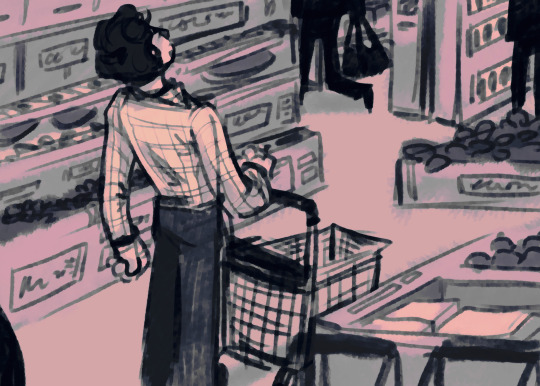
The dream took place in a large supermarket, near which I live in irl. I was there on my own, it seemed to be closer to evening, but there still were some people inside.

Then, an add-like intermission flashed before my eyes. The advertisement talked about an innovation for grocery carts. They added a feature that when you press a button located on the handle of the cart, a voice will be issued from it, warning people in front of you with a short phrase that the cart is moving towards them.
(Such an excuse made perfect sense in my dream, obviously, so it didn't raise any questions and was accepted as a fact.)

After that, the dream continued as if nothing had happened. I tried the voice button, and a short female voice with a few relevant phrases came out of the cart.

Like any self-respecting person, I pressed this button even when there was no one in front of me, just to pass the time while I walked between the rows in the supermarket, or perhaps to feel less lonely.
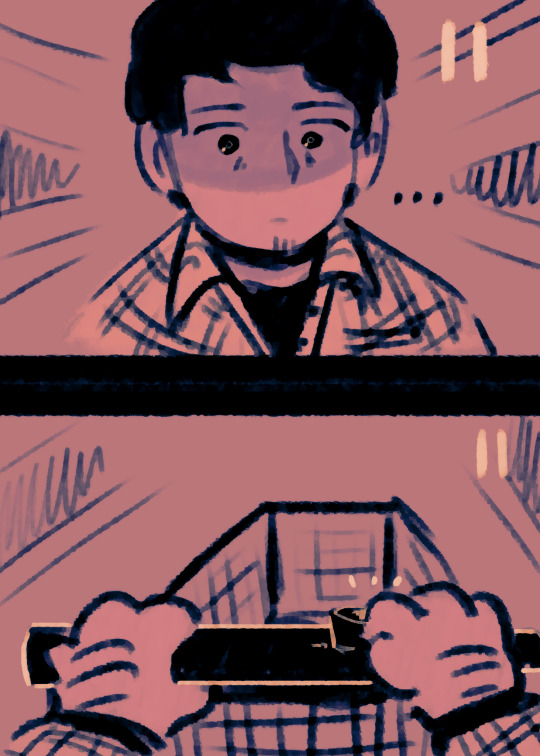
Then, in the midst of my thoughts and listening to the same phrases from the cart, I stopped dead in the middle of the store. The voice. The voice from the cart sounded different.
It was as if the world had been put on pause and then rewound. Back to the ads for those carts. It was possible to listen to an audio sample for the beta test of this new feature. I pressed the sound playback button.

The time has sped back forward to where we were originally thrown from. I pressed the button on the cart and it started saying those built in phrases, but in the Narrators voice. I was beyond delighted, so I started pressing it with little to no pauses between phrases.
While walking around I also noticed that it was actually a bit further in the day than before. It was probably the middle of the night, the lights were on only on some of the food shelves, and the supermarket was completely empty.
After some more time, I noticed that the phrases that the cart was making were no longer the pre-written warnings. The Narrator's phrases were just coming out of the cart now. And after that, I didn't even have to press the button, he was talking on his own now.

Completely unsurprised by what was happening, The Narrator described the supermarket and the current circumstances. Then, just for fun it seems, he started to ask me to go from one grocery department to another. The supermarket was empty, and I eventually allowed myself to lean on the cart and run with it through the long and empty rows in the semi-darkness.
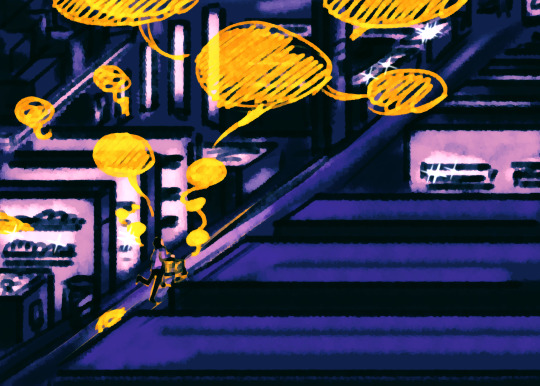
The light wind from me running ruffled my hair, however I didn't feel tired. It felt like I could run like this forever. And the supermarket itself seemed to expand, allowing me to run deeper and deeper into it, while the Narrator's voice came from the cart, excitedly directing me to the next stand.
For those last moments of that dream, I felt different. Like a large weight was lifted from my shoulders. I was feeling so light and airy. I've never felt so free in my life since that dream. It didn't appear ever again.
63 notes
·
View notes
Text
"[There is] fantastic news for species conservation after new populations of the gorgeous ‘Skywalker’ gibbon, known to science for only 6 years, were recently found living in the politically chaotic nation of Myanmar.
Also called the hoolock gibbon, this dainty vocalist was first described in 2017 living in the extreme south of China on a mountain in Yunnan. Classified as Endangered by the IUCN, the population was estimated to number a paltry 150 individuals, but others were believed to live in Myanmar.
Even before the recent military junta usurped the president and plunged the country into civil war, Myanmar [was a difficult place to conduct field studies, especially extensive or ongoing ones, due to ongoing conflict.]
[Although they are] now in open revolt against the military junta, [the Myanmar states of Shan and Kachin] were nevertheless destinations for an intrepid team of scientists from the Nature Conservation Society Myanmar, Fauna & Flora International–Myanmar Programme, the IUCN’s ape specialist group, and field researchers from universities in England, China, and the US.
Together, they conducted acoustic surveys, collected non-invasive DNA sampling, and took photographs for morphological identification at six sites in Kachin State and three sites in Shan State. With the help of the Myanmar conservationists, the team also interviewed locals dwelling in rural forested areas, small conservation programs, and timber companies about the frequency of sightings and the hunting pressure.
Population estimates of unknown quality and scientific rigor conducted in 2013 suggested there might be 65,000 hoolock gibbons in Myanmar, but the matter became much more complicated after the classification of the Skywalker gibbon as a separate species from the eastern hoolock gibbon—where before they were confused as the same.
“We were able to genetically identify 44 new groups of Skywalker gibbons in Myanmar,” said senior author Tierra Smiley Evans, research faculty at the UC Davis School of Veterinary Medicine, and contributing author. “This is a huge resource and success story for Myanmar.”
These gibbons sing to each other at dawn for around 22 minutes, and consume 36 different plant species; choosing fruit first, and flowers later. They seldom sleep in the same tree two nights in a row to avoid predation, and can’t swim so are often confined to territories by river systems.
The team that discovered them in China in 2017 loved Star Wars, and called them tianxing which is Chinese pinyin for “heaven movement;” a nod not only to their favorite sci-fi franchise, but also to China’s ancient history. In the famous Book of Change [aka the I Ching] of the Zhou Dynasty [1046 BCE to 265 BCE], a divination poem refers to gibbons specifically, and uses tianxing as a verb to describe their movements.
The interviews were a source of great data for the scientists. For starters, nearly all individuals in both the Kachin and Shan states could identify a Skywalker gibbon by sight and by playback of its singing, lending the exercise a good degree of reliability...
“Biologists did not believe Skywalker gibbons could live in the small remaining patches in Southern Shan State before we started this project,” Pyae Phyo Aung, executive director of Nature Conservation Society Myanmar, told the UC Davis press.
“I am delighted with our field team members who have done an excellent job, within a short period of time, building community trust for further conservation actions. This area is degraded forest. It is really important for Myanmar and China to consider extending conservation approaches for the Skywalker gibbon to this new geographic area.”
Nearly 32,000 square kilometers, or around 8 million acres of forestland in Eastern Myanmar are suitable gibbon habitat, and while existing forest reserves like Paung Taung and Mae Nei Laung are quite large, they remain unprotected. For this reason, the survey team recommended they remain considered ‘Endangered’ on the IUCN Red List until habitat protections improve."
-via Good News Network, February 21, 2024
#gibbon#apes#primates#myanmar#endangered species#china#zoology#conservation biology#conservation news#primatology#good news#hope
179 notes
·
View notes
Text
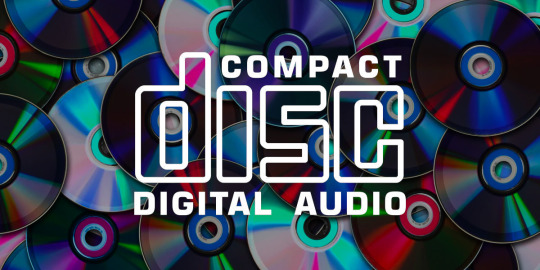
A few people took exception to calling my car's CD player useless.
I actually think it is great there are a few holdouts still using CDs.
CDs are truly one of the most perfect media ever created.
And I can prove that mathematically.
Some will say vinyl is superior. And as much as I love records, the audio quality is preferred, not better. People have a *preference* for how vinyl sounds, but it still leaves out audio information and has noise and artifacts caused by the mechanics of the turntable and an imperfect manufacturing process.
In fact, the lesser audio quality is exactly what people enjoy. It has a warmth and comfortably compressed dynamic range that is not fatiguing over long listening sessions. It's like choosing a nice fire over a 100% efficient space heater.
But if you want perfect audio quality that does not exceed the limits of human hearing, compact discs are where it's at.
It all has to do with Dr. Harry Nyquist and his Nyquist-Shannon Theorem. (Sometimes Shannon gets left out and it is just called the Nyquist Theorem.)
The simple version is he figured out how much something needs to be sampled in order to not lose any information. As long as you sample something at a frequency greater than or equal to twice per cycle, you will have a lossless... whatever.
In this case, a lossless audio recording.
So the range of human hearing is about 20 Hz to 20 kHz. That's the lowest and highest frequencies we can perceive. The scientists creating CD audio figured they'd do 22 kHz for some overhead and then you double that to get 44 kHz. (Technically it was 44.1 kHz.)
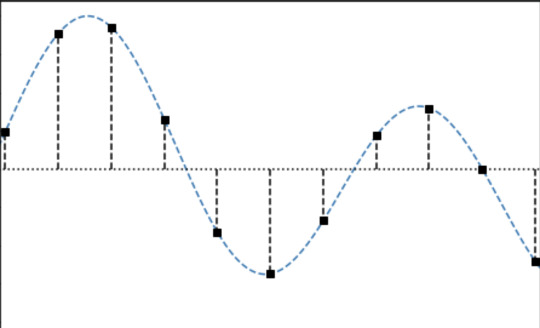
You can imagine the smooth curvy line as an analog recording. No gaps. No information loss.
The black squares are digital samples recorded over a period of time. You can see there are gaps between those black squares. A tiny bit of time passes between the squares where nothing is sampled. INFORMATION LOSS! NOOOOO!
Clearly the vinyl nerds are correct and digital is inferior, right? You are going to get the dreaded... STAIR STEPS!
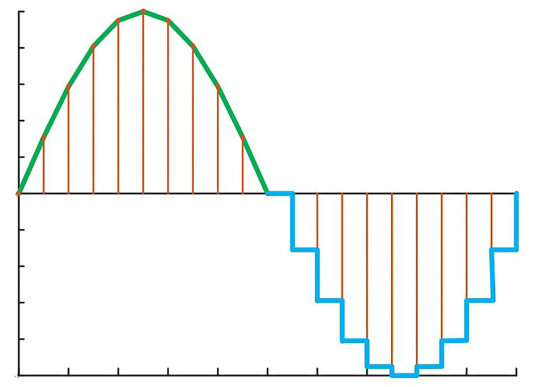
Not so fast, bucko!
By getting enough samples over a period of time, you can use math to infer that smooth sloping line connecting those individual samples. So the digital recording also has no information lost once it is converted back to analog and played through your speakers.
This connecting of dots is called "interpolation."
You could take the curvy analog, convert it to digital, get the same black squares, and then interpolate the black squares back into analog and get the same curvy line. It goes back and forth perfectly. And this is all verifiable with an oscilloscope.
NEAT!
Then of course you need a good dynamic range--the spectrum of quiet to loud. Anything above 85 decibels will damage your hearing, so they went with a 16-bit depth which covers roughly 100 dB. Again, giving them a little overhead for death metal and overzealous trumpet players.
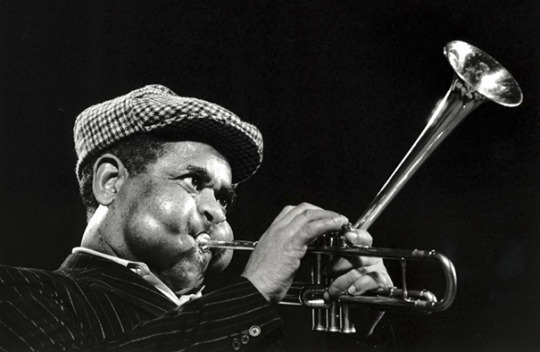
And the final component is data bandwidth or "bitrate" usually measured in kilobits per second. This is how much data is read every second. The 1s and 0s of it all. The bitrate of a CD is calculated by multiplying 44,100 samples per second per channel by 16 bits per sample and then multiplying by 2 channels. After all that mathing is math'd, you get a perfectly uncompressed 1,411 kbps.
So you've got all the frequencies you could ever hear combined with as much volume as your ears can stand with a bit rate that will give you no loss of data.
The *perfect* audio quality all encoded into little microscopic pits.
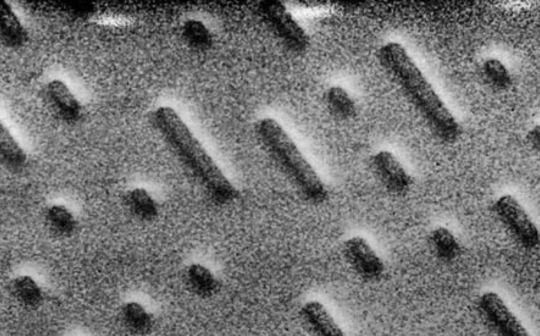
Now you may be asking, "Why do I see "24/96" or "24/192" advertised on fancy audio equipment and high quality streaming platforms like Tidal? Aren't 24 bits better? Isn't 96 kHz MORE than 44.1 kHz?"

Dr. Nyquist might say... this is some bullshit.
This confusion comes from the fact that recording quality and playback quality are two different animals. This misunderstanding happens with video and photo quality as well. Recording in 6K will give you a sharper picture even if your final playback quality is 4K. You can get bad pixels and noise and stray photons that do not contribute to the detail in the video. By giving yourself overhead you can ensure you hit the desired quality target.
And recording at 24 bits and 96 or 192 kHz, you get a higher resolution to edit and master with, but it is only advantageous to the computer software... not the human ear.
From a photographer's perspective, I relate to it like this...
If I have more megapixels and more colors and more dynamic range I have more leeway when editing my photos. If you try to push a low quality photo in the edit, it has this tendency to fall apart. You can get ugly color banding and harsh contrast and sharpening artifacts. By capturing more quality than you need in the finished product, you can process the photo much more dramatically before it deteriorates and loses integrity.
Audio and video are the same way.
So let's say you have a metal singer that screams at the microphone as loud as possible from 2 inches away.
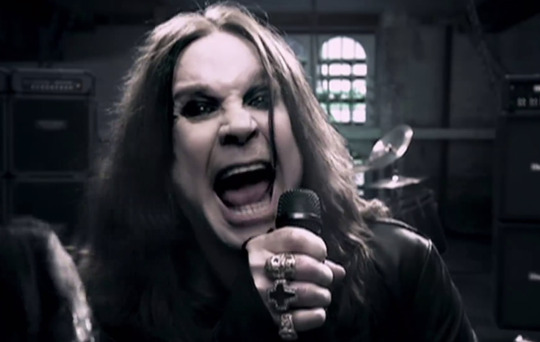
At 16 bits they may surpass that 100 decibel dynamic range and distort the recording. But if you record in 24 bits, you get 144 dB to play with. Or you can even do 32 bits and get 1500 dB--a volume that no human voice could ever surpass. It guarantees a clean, distortion free recording, but 32 bits would be pointless for human listening.
The same is true with the sample rate. Having a higher resolution allows you to zoom into waveforms and adjust things to an extremely granular level. You can do precise timings, tiny pitch adjustments, apply loads of digital effects, and just have more room for audio activities without degrading the sound quality.
But outputting 192,000 of those black squares is going to interpolate the exact same smooth curvy line as 44,100 when it is played through speakers.
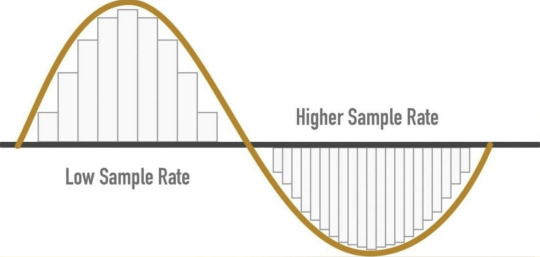
The oscilloscope knows what I'm talking about.
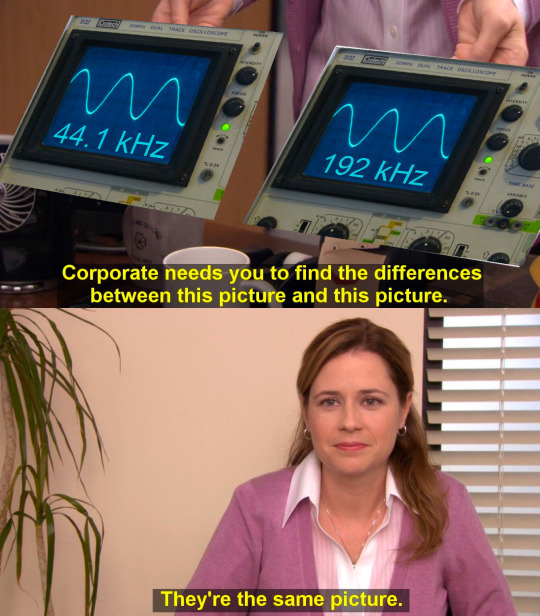
Now I am about to reveal a secret that no audiophile who has invested in a $115,000 high resolution 32 bit/3,072 kHz DAC wants to acknowledge...
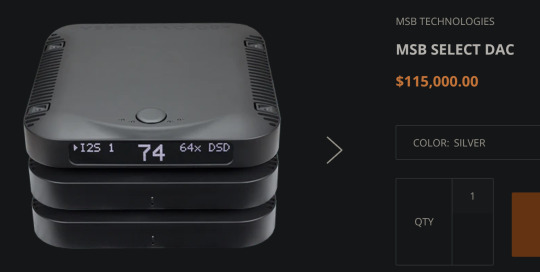
The master recording is always more important than the playback quality.
If you have a high quality source it will sound great even in a highly compressed MP3. Just like the 6K video is sharper on the 4K TV. And the high megapixel photo looks better in an Instagram post.
If the source is good, the media will be good.
And since high resolution audio services often seek out the best masters available before encoding their playback files, it gives many people the illusion they are getting better sound quality due to the boosted specs.
When in reality, it was just a better copy of the original recording.
According to Nyquist, your human ears are not computers and all you need is double the frequency to hear perfect sound with no loss of information. So anything above 16 bit/44.1 kHz/1411 kbps and you are just wasting bandwidth on a server.
And I don't want to hear anything about "stair stepping."
IT'S MATH.
Your ears aren't better than math, okay?
If you don't believe in math, then you and Jack White can sit in the naughty math corner with his bespoke overpriced vinyl pressings.

I will say, there is a gap between your standard music streaming service like Spotify and your bullshit audiophile service like Tidal.
Free Spotify uses heavily compressed files. Which means the bitrate is quite low and there can be information loss. Or "lossy" compression. Modern compression is actually pretty amazing, but I'm afraid anything below 320 kbps may cause some songs to not sound as intended.
Depending on the content, some songs are more suited to compression than others. And even with premium Spotify, they cap songs at 320 kbps which still may not be enough for busier, harder-to-compress songs.
Also, I don't know if Spotify cares about getting the best quality master for a given song. Which, again, is the most important aspect of sound quality.
But services like Tidal waste bandwidth with their super specs and that isn't great for the environment. What I'd love to see is a company that makes their best effort to seek out high quality masters, and encodes their files at 16 bit/44 kHz with a lossless variable bit rate compression. Variable bit rate or "VBR" will do more compression during simpler parts of the audio and less compression during more complex parts. It's smart compression, basically. And as long as you use a high enough bitrate to achieve lossless compression, the sound quality will be the same as if there is no compression at all. So you still get smaller file sizes that use less bandwidth and have a smaller environmental impact.
That would be a streaming service I would consider paying for. Especially if they put great effort into getting high quality original recordings for their content.
In conclusion... if you are still using CDs you don't need to worry about audio quality. You're all set. There is a sort of beauty in what the audio scientists who created compact discs did. They figured out the limits of human audio perception and created a format that just slightly exceeded that. No "bigger number is better" marketing. No audiophile bullshit.
They said, "Here is what you need and nothing more."
They made a perfect thing and they should be proud of that.
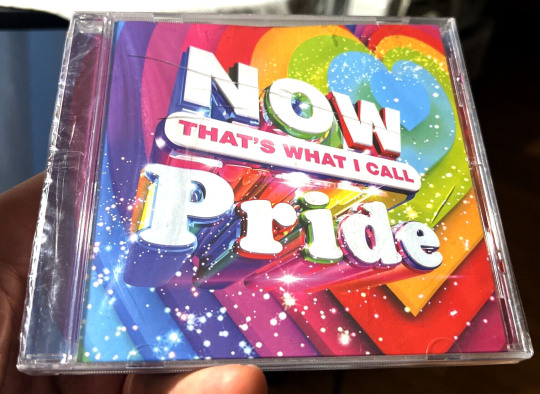
435 notes
·
View notes
Text
Music Theory Notes (for science bitches) 1: chords & such
This is one of these series where I use my blog as a kind of study blog type thing. If you're knowledgeable about music theory, it will be very basic. But that's kind of the problem, I've really struggled to absorb those basics!
When I was a teenager I learned to play violin and played in orchestras. I could read music, and play decently enough, but I didn't really understand music. I just read what was on the page, and played the scales I had to play for exams.
Lately I've been trying to learn music again. This time my instruments are zhonghu, voice, and DAWs. At some point I might get my violin back too. But really, I'm a total beginner again, and this time I want to do it properly.
For a long time when I tried to learn about music I would get overwhelmed with terminology and jargon and conventions. I might watch videos on composition and they'd be interesting but a lot of it would just fly over my head, I'd just have to nod along because I had no idea what all the different types of chord and such were. I tried to learn from sites like musictheory.net, but I found it hard to figure out the logical structure to fit it all into.
I feel like I'm finally making a bit of headway, so it's time to take some notes. The idea here is not just to answer the what, but also to give some sense of why, a motivation. So in a sense this is a first attempt at writing the introduction to music theory I wish I'd had. This is going to assume you know a little bit about physics, but basically nothing about music.
What is music? From first principles.
This is impossible to answer in full generality, especially since as certain people would be quick to remind me, there's a whole corner of avant-garde composers who will cook up counterexamples to whatever claim you make. So let's narrow our focus: I'm talking about the 'most common' type of music in the society I inhabit, which is called 'tonal music'. (However some observations may be relevant to other types of music such as noise or purely rhythmic music.)
Music is generally an art form involving arranging sound waves in time into patterns (in the sense that illustration is about creating patterns on a 2D surface with light, animation is arranging illustrations in time, etc.).
Physically, sound is a pressure wave propagating through a medium, primarily air. As sound waves propagate, they will reflect off surfaces and go into superposition, and depending on the materials around, certain frequencies might be attenuated or amplified. So the way sound waves propagate in a space is very complicated!
But in general we've found we can pretty decently approximate the experience of listening to something using one or two 'audio tracks', which are played back at just one or two points. So for the sake of making headway, we will make an approximation: rather than worry about the entire sound field, we're going to talk about a one-dimensional function of time, namely the pressure at the idealised audio source. This is what gets displayed inside an audio editor. For example, here's me playing the zhonghu, recorded on a mic, as seen inside Audacity.

A wrinkle that is not relevant for this discussion: The idealised 'pressure wave' is a continuous real function of the reals (time to pressure). By contrast, computer audio is quantised in both the pressure level and time, and this is used to reconstruct a continuous pressure wave by convolution at playback time. (Just like a pixel is not a little square, an audio sample is not a constant pressure!) But I'm going to talk about real numbers until quantisation becomes relevant.
When the human eye receives light, the cone cells in the eye respond to the frequencies of EM radiation, creating just three different neural signals, but with incredibly high sensitivity to direction. By contrast, when the human ear receives sound, it is directed into an organ called the cochlea which is kind of like a cone rolled up into a spiral...

Inside this organ, the sound wave moves around the spiral, which has a fascinatingly complex structure that means different frequencies of wave will excite tiny hairs at different points along the tube. In effect, the cochlea performs a short-time Fourier transform of the incoming sound wave. Information about the direction of the incoming wave is given by the way it reflects off the shape of the ear, the difference between ears, and the movement of our head.
So! In contrast to light, where the brain receives a huge amount of information about directions of incoming light but only limited information of the frequency spectrum, with sound we receive a huge amount of information about the frequency spectrum but only quite limited information about its direction.
Music thus generally involves creating patterns with vibration frequencies in the sound wave. More than this, it's also generally about creating repeating patterns on a longer timescale, which is known as rhythm. This has something to do with the way neurons respond to signals but that's something I'm not well-versed in, and in any case it is heavily culturally mediated.
All right, so, this is the medium we have to play with. When we analyse an audio signal that represents music, we chop it up into small windows, and use a Fourier transform to find out the 'frequencies that are present in the signal'.
Most musical instruments are designed to make sounds that are combinations of certain frequencies at integer ratios. For example here is a plot of the [discrete] Fourier transform of a note played on the zhonghu:

The intensity of the signal is written in decibels, so it's actually a logarithmic scale despite looking linear. The frequency of the wave is written in Hertz, and plotted logarithmically as well. A pure sine wave would look like a thin vertical line; a slightly wider spike means it's a combination of a bunch of sine waves of very close frequencies.
The signal consists of one strong peak at 397Hz and nearby frequencies, and a series of peaks at (roughly) integer multiples of this frequency. In this case the second and third peaks are measured at 786Hz, and 1176Hz. Exact integer ratios would give us 794Hz and 1191Hz, but because the first peak is quite wide we'd expect there to be some error.
Some terminology: The first peak is called the fundamental, and the remaining peaks are known as overtones. The frequency of the fundamental is what defines this signal as a particular musical note, and the intensities of the overtone and widths of the peaks define the quality of the note - the thing that makes a flute and a violin playing the same fundamental frequency sound different when we listen to them. If you played two different notes at the same time, you'd get the spectrums of both notes added together - each note has its own fundamental and overtones.
OK, so far that's just basic audio analysis, nothing is specific to music. To go further we need to start imposing some kind of logical structure on the sound, defining relationships between the different notes.
The twelve-tone music system
There are many ways to do this, but in the West, one specific system has evolved as a kind of 'common language' that the vast majority of music is written in. As a language, it gives names to the notes, and defines a space of emotional connotations. We unconsciously learn this language as we go through the process of socialisation, just as we learn to interpret pictures, watch films, etc.
The system I'm about to outline is known as 12-tone equal temperament or "12TET". It was first cooked up in the 16th century almost simultaneously in China and Europe, but it truly became the standard tuning in the West around the 18th century, distilled from a hodgepodge of musical systems in use previously. In the 20th century, classical composers became rather bored of it and started experimenting with other systems of tonality. Nevertheless, it's the system used for the vast majority of popular music, film and game soundtracks, etc.
Other systems exist, just as complex. Western music tends to create scales of seven notes in an octave, but there are variants that use other amounts, like 6. And for example classical Indian music uses its own variant of a seven-note scale; there are also nuances within Western music such as 'just intonation' which we'll discuss in a bit; really, everything in music is really fucking complicated!
I'll be primarily discussing 12TET because 1. it's hard enough to understand just one system and this one is the most accessible; 2. this has a very nice mathematical structure which tickles my autismbrain. However, along the way we'll visit some variants, such as 'Pythagorean intervals'.
The goal is to try and not just say 'this is what the notation means' but explain why we might construct music this way. Since a lot of musical stuff is kept around for historical reasons, that will require some detours into history.
Octaves
So, what's the big idea here? Well, let's start with the idea of an octave. If you have two notes, let's call then M and N, and the frequency of N is twice the frequency of M... well, to the human ear, they sound very very closely related. In fact N is the first overtone of M - if you play M on almost any instrument, you're also hearing N.
Harmony, which we'll talk about in a minute, is the idea that two notes sound especially pleasant together - but this goes even further. So in many many music systems around the world, these two notes with frequency ratio of 2 are actually identified - they are in some sense 'the same note', and they're given the same name. This also means that further powers of 2, of e.g. 4, 8, 16, and so on, are also 'the same note'. We call the relationship between M and N an octave - we say if two notes are 'an octave apart', one has twice the frequency of the other.
For example, a note whose fundamental frequency is 261.626Hz is known as 'C' in the convention of 'concert pitch'. This implies an infinite series of other Cs, but since the human ear has a limited range of frequencies, in practice you have Cs from 8.176Hz up through 16744.036. These are given a series of numbers by convention, so 261.626Hz is called C4, often 'middle C'. 523.251Hz is C5, 1046.502Hz is C6, and so on. However, a lot of the time it doesn't matter which C you're talking about, so you just say 'C'.
But the identification of "C" with 261.626Hz * 2^N is just a convention (known as 'concert pitch'). Nothing is stopping you tuning to any other frequency: to build up the rest of the structure you just need some note to start with, and the rest unfolds using ratios.
Harmony and intervals
Music is less about individual notes, and more about the relationship between notes - either notes played at the same time, or in succession.
Between any two notes we have something called an interval determined by the ratio of their fundamental frequencies. We've already seen one interval: the octave, which has ratio 2.
The next interval to bring up is the 'fifth'. There are a few different variants of this idea, but generally speaking if two notes have a ratio of 1.5, they sound really really nice together. Why is this called a 'fifth'? Historical reasons, there is no way to shake this terminology, we're stuck with it. Just bear with me here, it will become semi-clear in a minute.
In the same vein, other ratios of small integers tend to sound 'harmonious'. They're satisfying to hear together. Ratios of larger integers, by contrast, feel unsatisfying. But this creates an idea of 'tension' and 'resolution'. If you play two notes together that don't harmonise as nicely, you create a feeling of expectation and tension; when you you play some notes that harmonise really well, that 'resolves' the tension and creates a sense of relief.
Building a scale - just intonation
The exact 3:2 integer ratio used in two tuning systems called 'Pythagorean tuning' and 'just intonation'. Using these kinds of integer ratios, you can unfold out a whole series of other notes, and that's how the Europeans generally did things before 12TET came along. For example, in 'just intonation', you might start with some frequency, and then procede in the ratios 9/8, 5/4, 4/3, 3/2, 5/3, 15/8, and at last 2 (the octave). These would be given a series of letters, creating a 'scale'.
What is a scale? A scale is something like the 'colour palette' for a piece of music. It's a set of notes you use. You might use notes from outside the scale but only very occasionally. Different scales are associated with different feelings - for example, the 'major scale' generally feels happy and triumphant, while a 'minor scale' tends to feel sad and forlorn. We'll talk a lot more about scales soon.
In the European musical tradition, a 'scale' consists of seven notes in each octave, so the notes are named by the first seven notes of the alphabet, i.e. A B C D E F G. A scale has a 'base note', and then you'd unfold the other frequencies using the ratios. An instrument such as a piano would be tuned to play a particular scale. The ratios above are one definition of a 'major scale', and starting with C as the base note, the resulting set of notes is called 'C Major'.
All these nice small-number ratios tend to sound really good together. But it becomes rather tricky if you want to play multiple scales on the same instrument. For example, say your piano is tuned in just intonation to C Major. This means, assuming you have a starting frequency we'll call C, you have the following notes available in a given octave:

C, D=(9/8)C, E=(5/4)C, F=(4/3)C, G=(3/2)C [the fifth!], A=(5/3)C, B=(15/8)C, and 2C [the start of the next octave].
Note: the interval we named the 'fifth' is the fifth note in this scale. It's actually the fifth note in the various minor scales too.
But now suppose you want to play with some different notes - let's say a scale we'll call 'A major', which has the same frequency ratios starting on the note we previously called A. Does our piano have the right keys to play this scale?
Well, the next note up from A would be (9/8)A, which would be (9/8)(5/3)C=(15/8)C - that's our B key, so far so good. Then (5/4)A=(5/4)(5/3)C=(25/12)C and... uh oh! We don't have a (25/12)C key, we have 2C, so if we start at A and go up two keys, we have a note that is slightly lower frequency than the one we're looking for.
What this means is that, depending on your tuning, you could only approximate the pretty integer ratios for any scale besides C major. (25/12) is pretty close to 2, so that might not seem so bad, but sometimes we'd land right in between two notes. We can approximate these notes by adding some more 'in between' piano keys. How should we work out what 'extra' keys to include? Well, there were multiple conventions, but we'll see there is some logic to it...
[You might ask, why are you spending so long on this historical system that is now considered obsolete? Well, intervals and their harmonious qualities are still really important in modern music, and it makes most sense to introduce them with the idea of 'small-integer ratios'.]
The semitone
We've seen if we build the 'major scale' using a bunch of 'nice' ratios, we have trouble playing other scales. The gap above may look rather haphazard and arbitrary, but hold on, we're working in exponential space here - shouldn't we be using a logarithmic scale? If I switch to a logarithmic x-axis, we suddenly get a rather appealing pattern...

All the gaps between successive notes are about the same size, except for the gap between E and F, and B and C, which are about half that size. If you try to work that out exactly, you run into the problems we saw above, where C to D is 9/8 or 1.125, but D to E is 10/9 or 1.11111... Even so, you can imagine how people who were playing around with sounds might notice, damn, these are nice even steps we have here. Though you might also notice places where, in this scheme, it's not completely even - for example G to A (ratio 10/9) is noticeably smaller than A to B (ratio 9/8).
We've obliquely approached the idea of dividing the octave up into 12 steps, where each step is about the size of the gap between E and F or B and C. We call each of these steps a 'semitone'. Two semitones make a 'whole tone'. We might fill in all the missing semitones in our scale here using whole-number ratios, which gives you the black keys on the piano. There are multiple schemes for doing this, and the ratios tend to get a bit uglier. In the system we've outlined so far, a 'semitone' is not a fixed ratio, even though it's always somewhere around 1.06.
The set of 12 semitones is called the 'chromatic scale'. It is something like the 'colour space' for Western music. When you compose a piece, you select some subset of the 12 semitones as your 'palette' - the 'scale of' a piece of music.
But we still have a problem here, which is the unevenness of the gaps we discussed above. This could be considered a feature, not a bug, since each scale would have its own 'character' - it's defined by a slightly different set of ratios. But it does add a lot of complication when moving between scales.
So let's say we take all this irregularity as a bug, and try to fix it. The solution is 'equal temperament', which is the idea that the semitone should always be the exact same ratio, allowing the instrument to play any scale you please without difficulty.
Posed like this, it's easy to work out what that ratio should be: if you want 12 equal steps to be an octave, each step must be the 12th root of 2. Which is an irrational number that is about 1.05946...
At this point you say, wait, Bryn, didn't you just start this all off by saying that the human ear likes to hear nice simple integer ratios of frequencies? And now you're telling me that we should actually use an irrational number, which can't be represented by any integer ratio? What gives? But it turns out the human ear isn't quite that picky. If you have a ratio of 7 semitones, or a ratio of 2^(7/12)=1.4983..., that's close enough to 1.5 to feel almost as good. And this brings a lot of huge advantages: you can easily move ('transpose') between different scales of the same type, and trust that all the relevant ratios will be the same.
Equal temperament was the eventual standard, but there was a gradual process of approaching it called stuff like 'well-tempered' or 'good temperament'. One of the major steps along the way was Bach's collection 'the well-tempered klavier', showing how a keyboard instrument with a suitable tuning could play music in every single established scale. Here's one of those pieces:
youtube
Although we're using these irrational numbers, inside the scale are certain intervals that are considered to have certain meanings - some that are 'consonant' and some that are 'dissonant'. We've already mentioned the 'fifth', which is the 'most consonant' ratio. The fifth consists of 7 semitones and it's roughly a 1.5 ratio in equal temperament. Its close cousin is the 'fourth', which consists of 5 semitones. Because it's so nice, the fifth is kind of 'neutral' - it's just there but it doesn't mean a lot on its own.
For the other important intervals we've got to introduce different types of scale.
The scale zoo
So, up above we introduced the 'major' scale. In semitones, the major scale is intervals of 2, 2, 1, 2, 2, 2, 1. This is also called a 'mode', specifically the 'Ionian mode'. There are seven different 'modes', representing different permutations of these intervals, which all have funky Greek names.
The major scale generally connotes "upbeat, happy, triumphant". There are 12 different major scales, taking the 12 different notes of the chromatic scale as the starting point for each one.
Next is the minor scale, which tends to feel more sad or mysterious. Actually there are a few different minor scales. The 'natural minor' goes 2, 1, 2, 2, 1, 2, 2. You might notice this is a cyclic permutation of the major scale! So in fact a natural minor scale is the same set of notes as a major scale. What makes it different?
Well, remember when we talked about tension and resolution? It's about how the notes are organised. Our starting note is the 'root' note of the scale, usually established early on in the piece of music - quite often the very first note of the piece. The way you move around that root note determines whether the piece 'feels' major or minor. So every major scale has a companion natural minor scale, and vice versa. The set of notes in a piece is enough to narrow it down to one minor and one major, but you have to look closer to figure out which one is most relevant.
The 'harmonic minor' is almost the same, but it raises the second-last note (the 7th) a semitone. So its semitone intervals are 2, 1, 2, 2, 1, 3, 1.
The 'melodic minor' raises both the 6th and 7th by one semitone, (edit: but usually only on the way up). So its semitone intervals are 2, 1, 2, 2, 2, 2, 1. (edit: When you come back down you tend to use the natural minor.)
If you talk about a 'minor scale' unqualified, you mean the natural minor. It's also the 'Aeolian mode' in that system of funky Greek names I mentioned earlier.
So that leads to a set of 24 scales, a major and minor scale for every semitone. These are the most common scale types that almost all Western tonal music is written in.
But we ain't done. Because remember I said there were all those other "modes"? These are actually just cyclic permutations of the major scale. There's a really nerdy Youtube channel called '8-bit music theory' that has a bunch of videos analysing them in the context of videogame music which I'm going to watch at some point now I finally have enough background to understand wtf he's talking about.
youtube
And of top of that you have all sorts of other variants that come from shifting a note up or down a semitone.
The cast of intervals
OK, so we've established the idea of scales. Now let's talk intervals. As you might guess from the 'fifth', the intervals are named after their position in the scale.
Let me repeat the two most common scale modes, in terms of number of semitones relative to the root note:
position: 1, 2, 3, 4, 5, 6, 7, 8 major: 0, 2, 4, 5, 7, 9, 11, 12 minor: 0, 2, 3, 5, 7, 8, 10, 12
So you can see the fourth and fifth are the same in both. But there's a difference in three places: the third, the sixth, and the seventh. In each case, the minor is down a semitone from the major.
The interval names are... not quite as simple as 'place in the scale', but that's mostly how it works. e.g. the 'major third' is four semitones and the 'minor third' is three.
The fourth and fifth, which are dual to each other (meaning going up a fifth takes you to the same note as going down a fourth, and vice versa) are called 'perfect'. The note right in between them, an interval of 6 semitones, is called the 'tritone'.
(You can also refer to these intervals as 'augmented' or 'diminished' versions of adjacent intervals. Just in case there wasn't enough terminology in the air. See the table for the names of every interval.)
So, with these names, what's the significance of each one? The thirds, sixths and sevenths are important, because they tell us whether we're in minor or major land when we're building chords. (More on that soon.)
The fifth and the octave are super consonant, as we've said. But the notes that are close to them, like the seventh, the second and even more so the tritone, are quite dissonant - they're near to a nice thing and ironically that leads to awkward ratios which feel uncomfy to our ears. So generally speaking, you use them to build tension and anticipation and set up for a resolution later. (Or don't, and deliberately leave them hanging.)
Of course all of these positions in the scale also have funky Latin names that describe their function.
There's a lot more complicated nuances that make the meaning of a particular interval very contextual, and I certainly couldn't claim to really understand in much depth, but that's basically what I understand about intervals so far.
Our goofy-ass musical notation system
So if semitones are the building block of everything, naturally the musical notation system we use in the modern 12TET era spaces everything out neatly in terms of semitones, right?
Right...?

Lmao no. Actually sheet music is written so that each row of the stave (or staff, the five lines you write notes on) represents a note of the C major scale. All the notes that aren't on the C major scale are represented with special symbols, namely ♯ (read 'sharp') which means 'go up a semitone', and ♭ (read 'flat') which means 'go down a semitone'. That means the same note can be notated in two different ways: A♯ and B♭ are the same note.
The above image shows the chromatic scale, notated in two different ways. Every step is exactly one semitone.
Since a given scale might end up using one of these 'in between' notes that has to be marked sharp or flat, and you don't want to do that for every single time that note appears. Luckily, it turns out that each major/minor scale pair ends up defining a unique set of notes to be adjusted up or down a semitone, called the 'key signature'. So you can write the key signature at the beginning of the piece, and it lasts until you change key signature. For example, the key of 'A♭ major' ends up having four sharps:

There is a formula you can use to work out the set of sharps or flats to write for a given key. (That's about the point I checked out on musictheory.net.)
There is some advantage to this system, which is that it very clearly tells you when the composer intends to shift into a different scale, and it saves space since with the usual scales there are no wasted lines. But it's also annoyingly arbitrary. You just have to remember that B to C is only a semitone, and the same for E to F.
What are those weird squiggly symbols? Those are 'clefs'. Each one assigns notes to specific lines. The first one 𝄞 is the 'treble clef', the second one 𝄢 is the 'bass clef'. Well, actually these are the 'G-clef' and the 'F-clef', and where they go on the stave determines note assignment, but thankfully this has been standardised and you will only ever see them in one place. The treble clef declares the lines to be E G B D F and the bass clef G B D F A.
There is also a rarer 'C-clef' which looks like 𝄡. This is usually used as the 'Alto clef' which means F A C E G.
This notation system seems needlessly convoluted, but we're rather stuck with it, because most of the music has been written in it already. It's not uncommon for people to come up with alternative notations, though, such as 'tabs' for a stringed instrument which indicate which position should be played on each string. Nowadays on computers, a lot of DAWs will instead use a 'piano roll' presentation which is organised by semitone.
And then there's chords.
Chords! And arpeggios!
A chord is when you play 3 or more notes at the same time.
Simple enough right? But if you wanna talk about it, you gotta have a way to give them names. And that's where things get fucking nuts.
But the basic chord type is a 'triad', consisting of three notes, separated by certain intervals. There are two standard types, which you basically assemble by taking every other note of a scale. In terms of semitones, these are:
Major triad: 0 - 4 - 7 Minor triad: 0 - 3 - 7
Then there's a bunch of variations, for example:
Augmented: 0 - 4 - 8 Diminished: 0 - 3 - 6 Suspended: 0 - 2 - 7 (sus2) or 0 - 5 - 7 (sus4) Dominant seventh: 0 - 4 - 7 - 10 Power: 0 - 7
There is a notation scheme for chords in pop, jazz, rock, etc., which starts with a root note and then adds a bunch of superscripts to tell you about any special features of a chord. So 'C' means the C Major triad (namely C,E,G) and 'Cm' or 'c' means the C Minor triad (namely C,E♭,G).
In musical composition, you usually tend to surround the melody (single voice) with a 'chord progression' that both harmonises and creates a sense of 'movement' from one chord to another. Some instruments like guitar and piano are really good at playing chords. On instruments that can't play chords, they can still play 'arpeggios', which is what happens if you take a chord and unroll it into a sequence of notes. Or you play in an ensemble and harmonise with the other players to create a chord together. Awww.
Given a scale, you can construct a series of seven triad chords, starting from each note of the scale. These are generally given scale-specific Roman numerals corresponding to the position in the scale, and they're used to analyse the progression of chords in a song. I pretty much learned about this today while writing this post, so I can't tell you much more than that.
Right now, that's about as far as I've gotten with chords. On a violin, you can play just two strings at the same time after all - I never had much need to learn about them so it remains a huge hole in my understanding of music. I can't recognise chords by ear at all. So I gotta learn more about them.
As much as I wrote this for my own benefit... if you found this post interesting, let me know. I might write more if people find this style of presentation appealing. ^^'
284 notes
·
View notes
Text
Sonic 1 Mega CD Port
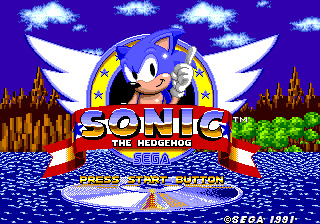
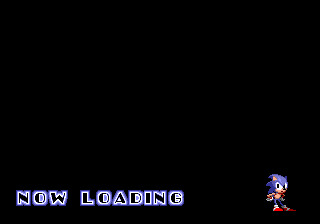
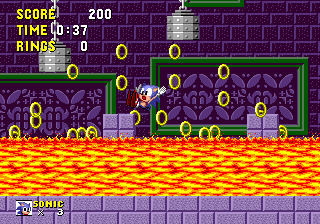
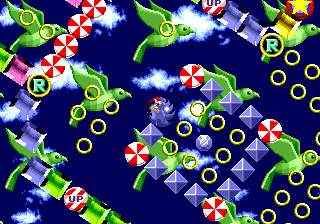
(download here)
(if you think this is cool, consider helping me find work/money <3)
Welcome to the Next Level!
NOTE: I'm aware of issues regarding audio playback and transitioning between zones, and intend to push an update once the contest judging period is over. In the meantime, you can use level select (Up Down Left Right A + Start at title screen) to explore the game.
At the 1992 Consumer Electronics Show, a teaser for a Mega CD version of Sonic 1 was shown within a sizzle reel. No Mega CD version of Sonic 1 was ever produced, and this footage is almost everything we know about this project, but it's extremely likely that this idea is what morphed into the separate game Sonic CD, the only Sonic game officially released for the console.
In 2006, Stealth released the Sonic for MegaCD tech demo, marking the first time any substantial effort was made to bring another Sonic game to the console. It contained the title screens and first levels of Sonic 1 and 2, with three playable characters. In the following years, he would build on the ideas in that demo further, eventually reaching a point where his setup accommodated a Mega CD version of a rom hack called Sonic Megamix.
For a long time, this rom hack was the only way to experience Sonic 1's levels, and was the closest you could get to playing the original game on your Mega CD...
until now.
This is a port of the original Sonic the Hedgehog (revision 1, mostly) to the Sega Mega CD (running in Mode 2/off a CD). Not a mere one-zone demo, not affected by an original hack's mechanics, this is a full playable Sonic game running on the Mega CD, with the source fully available, and with the intent of enhancing the game with the extra hardware.
I started this project about a month and a half ago to enter into the annual Sonic Hacking Contest. This was done as both a learning experience for myself to learn new hardware (I was already familiar with programming for Mega Drive, but wanted to explore its addons), and as an example others can learn from.
This has been tested with BlastEm, Fusion, Gens, and on real hardware using a Mega Everdrive Pro.
Features:
Expanded Sound.
The Mega CD comes with a chip supporting PCM playback for up to 8 channels, complementing the 10 sound channels already in the Mega Drive. This port leverages that by moving playback of drum samples to a custom PCM sound driver running on the Mega CD CPU.
Because drums no longer need to play on the Mega Drive hardware, an extra sound channel was added in the main sound driver to allow for more sound effects to play without cutting out channels of the music.
Unfortunately, I was not able to get CD audio playback fully implemented in time for the initial release. Most of the pieces are there though, and I intend to add it in a future update.
An open-source Mega CD game. The scene for Mega CD has grown significantly over time, and over the years there has been new homebrew and hacks of other games, but not nearly as much done with the blue guy this contest is about. This port aims to change that; this is a full game running on Mega CD, with source code and development history available for browsing right now. Code for the kernel programs to load and run the game from disk is written in mostly C using the megadev toolchain. Rom hackers and developers more familiar with the Mega Drive standalone can use the code repository as an example of how to bring more full-fledged MD projects over to Mega CD with as few changes as possible.
Other features:
Custom loading screen while files are loaded from CD
Modified title screen, to remind you that this is indeed utilizing Mega CD hardware
Various bugfixes applied (for those familiar with Sonic Retro's Sonic 1 disassembly, FixBugs is turned on)
Much smoother special stage. The movement of objects making up the maze was unlocked, and the walls now display with 128 degrees of rotation (up from 16).
Even though I started this project to have something for the contest, I'm incredibly happy with what's been done so far, and I intend to work on it further after the contest to add more features. I consider this the beginning of a goodbright future for Sonic games and hacks on Mega CD.
Note: Debug mode and sound test have not been fixed to accommodate for the code that has been moved around. Try at your own risk!
Credits
Main developer: Amy Farbright
Playtesting and bug reporting: The Let's Talk About Sonic Discord
Special thanks: @fiffle, @milly, @crepe
Code used/referenced:
drojaazu's megadev toolchain
Devon's partial Sonic CD disassembly
SCHG How-to Guide
tversteeg's Rust implementation of rotsprite
Graphics used:
CD graphic on title screen: Sega Multimedia Studio, converted from sprites ripped by Mister Man
35 notes
·
View notes
Text
Terminator 2 (1991) and The Princess Bride (1987) share an interesting feature:
the scores both sound like a guy jamming on a cheap MIDI keyboard in his bedroom.
This modern reading is totally unfair -- in fact they were both made on state of the art sampling workstations, the Synclavier in the case of The Princess Bride, and the Fairlight CMI for Terminator 2. At the time they each sounded like nothing else. Only once sample playback got cheap would those soundtracks start to sound cheap. (My understanding is that they paid to install a Fairlight CMI in Brad Fiedel's garage and it slotted neatly into the space in the budget normally allocated to pay an orchestra to play a conventional score.)
The Princess Bride sounds like a Playstation 1 game (one of the ones that use sample playback, not Redbook audio)
youtube
It's especially funny to me when this soundtrack uses sampled acoustic guitar, because the composer, Mark Knopfler, is an accomplished guitarist. That's kind of his whole thing, actually. I guess he didn't want to bother walking to the next room to grab it. (Or, y'know, maybe he wanted everything to sound of a piece.)
youtube
Terminator 2 is more interesting in that it uses samples of acoustic instruments in unconventional ways -- a form of musique concrete. Most commonly it pitches the samples unnaturally low, so you can hear the buzzing of the low sample rate everywhere:
youtube
The T-1000 motif in particular is just a trumpet fall pitched way down until it sounds like a nightmare klaxon:
youtube
youtube
The Terminator 2 soundtrack, I think it holds up because there's still nothing really like it.
The Princess Bride, I think it's a lesson in how a lot of polish and detail work in practice only exists to impress your artisan peers. Like, yeah, fake orchestra has come a long way, both in technology and in technique, and Hans Zimmer probably winces when he hears the unconvincing use of lo-fi brass samples, but general audiences are still enthralled so who gives a shit?
It'd be one thing if it was supposed to be a technical musical showpiece. But it's a background element, and the movie is no lesser for it than The Wizard of Oz is lessened by the way you can see where the sets end in painted backdrops. It's good enough, and in fact many of those who notice will find it charming.
7 notes
·
View notes
Note
37 for v and vik
11 for handers
Hiiii! Thank you so much for the prompts! I'm gonna write the Handers one in a second post (will tag you) but here's the V and Viktor one 😊
36. A kiss without a motive
CW mentions of sex and drug use (none happening on screen) and large age gap (obviously).
I'll put the fic below the cut 😊 The boys are falling in love!!
---
Through a series of clicks and hisses the clinic door slid open and the security gate followed. Heavy boots pounded the concrete floors and the scent of clove smoke overtook the sterile air. Viktor knew who it was without even looking up from the boxing match playing out on the tiny screen in front of him.
"Hey, V," he called out, taking a swig of bourbon from the bottle on his desk. "You in for a tune-up?"
"Guess you could say that," V replied, coming up behind him to rest his hands on his shoulders and chin on top of his head.
A smile crept over his features at the contact and he paused the playback to lean back and look up at him. "What's up?"
"You got time for me?"
"For you? Always. Well, usually."
"Who's winnin'?" V asked, nodding to the frozen image on the monitor in front of them.
"Good question. Seems pretty evenly matched. I've got money on the girl on the left though, she's got a killer right cross."
"Think I could take her?"
"Ehh, keep practicing those punches, maybe. Or upgrade your arms. No one's fighting fair these days. Speakin' of, you here to talk business or pleasure?" His hands came up to rest on V's, gently stroking over his skin with a hum.
"Hmm, let's call it a bit of both?"
"Okay, now I'm intrigued. Let's hear it."
V took a step away to give Vik some breathing room and pulled a small vial from his pocket. He tossed it to the older man who caught it in one hand, examining the viscous, dark fluid inside. "Need some help with an analysis," he said, coming back to stand at Vik's side.
"What the hell is it?"
"Blood."
"Whose?"
"Don't worry 'bout that. It's a favor for a friend."
Vik sighed, turning the vial over in his fingers. "You've got some strange friends, V. You know that?"
"Yeah. Tell me 'bout it." He gave a wry half smile and a shrug.
Rolling himself over to the workbench, Vik snapped on a pair of nitrile gloves and went about prepping a sample. "What am I looking for? Drugs? Toxins? Infection?" he asked as he loaded a small amount of blood onto a slide and slipped it into the scanner.
"Dunno," V replied, taking a seat on the desk, legs dangling. "Anythin' weird."
"Very specific," Vik said, rolling his eyes and slipping on a pair of reading glasses as he looked over the initial results on the display. "Well, it's definitely human. That's a start."
"Anything off?"
"Mm. Not sure. There's a few irregularities. I'll run some more tests."
He could feel V's eyes boring into the side of his head, could catch the slight smile on his lips in the reflection of the monitor.
"What?" he said, finally glancing over at him.
"Nothin'. Just think you're cute when you're workin', that's all."
"Cute?" he scoffed, features twisting in dismay. "Not cool? Or ruggedly handsome? I'll take any of those over 'cute'."
"Nah, cute works." He hopped down from the desk, coming up behind Vik once again, draping his arms around his shoulders and pressing his cheek up against his.
"V..." he warned
"Hmm?"
"Work now, play later," he said, even as he relaxed under V's touch.
"Didn't I just say business and pleasure?" he asked, lips pressing into Vik's neck.
Vik turned his attention back to the monitor for a moment before he reached up and pulled off the glasses. "Gonna take a while anyway. Might as well make yourself comfortable," he said, swiveling around in the chair to face V.
V took that as an invitation, leaning down to plant both hands on Vik's thighs while he moved in for a kiss. "I like the way you think, old man," he murmured, warm, spiced breath tickling his skin.
"I dunno if we've got that kind of time."
"Hmm?" V asked, lashes fluttering over dark, half-lidded eyes.
Vik's hand cupped his cheek, thumb brushing over the deep scar there. "You know."
"Woah, hey, just wanted some affection, I can keep it in my pants." He chuckled, pressing another kiss to his cheek.
Somehow that surprised him. "So... not that kind of pleasure?"
"Missed you," V said softly. "Been busy. Been a while since I just got to... y'know, relax."
Thus far their relationship had consisted of more than a few rushed nights and stolen moments. Their friendship was intact and their business relationship just as healthy, but it was merely sex that filled in the gaps. Wonderful and exciting as it was, that little voice remained in Vik's mind that nagged at him that he was just a convenient bedfellow. V, after all, was a free bird a third his age, the possibility that there was more to it than that seemed exceedingly unlikely. And yet...
"Missed you too."
"Bet you were busy as hell. Heard there's been a lot of action lately."
"Sure. No complaints here. Never can have too many eddies. You know how it is. Still found plenty of time to wish you were here, though."
Wish a swift but gentle motion, V wheeled him back against the desk then took up a perch on his lap.
"You, uh, sure you're not looking for something else? I can fit in a quickie," Vik said, though he wasn't convinced he meant it.
"Nah. Not in the mood. Like I said, just wanna relax. You mind? Should I move?" V asked, hands resting on his chest.
"Stay," Vik replied, fingers curling around his hips, pulling him in closer so their lips could meet again.
"Why you actin' all weird about this? I mean, if you'd prefer—"
"No," he cut him off. "It's not like that. Just wasn't expecting it. You don't usually swing by just to chat."
"My bad..." V murmured, eyes downcast. "Didn't think you'd want that from me. Figured I'd better come bringin' dick or eddies if I wanted to stop by."
"That's not—" he sighed, trying to bite back his own emotions. "What the hell did I do to give you that impression? We were friends long before... all of this. Was kinda hopin' we still were."
"Course we are," V defended, brows knitting together.
"So what's with the hangdog look? And why would you think I only care about your body or your wallet?"
"Heh, really puttin' me on the spot here... no mercy." He sighed, running a nervous hand through his curls. "I mean it's good, damn good, you and me. I'm not lookin' to ruin that. I dunno if we're on the same page but—"
"I can't figure out if you're about to tell me this was all a mistake or that you've fallen madly in love with me."
V sputtered, the words catching in his throat. "Shit, Vik, I— yeah. Maybe a little."
"Which?"
"Both?"
That was... something. "Both, huh? You've lost me, kid. You're gonna have to spell it out for me."
"Christ, okay. It's like this: I like you. Like, really fuckin' like you. Like more than a friend or a doc or a lay. But I'm not an gonk, I know a fling's a fling and I don't expect anythin' out of it. Still doesn't stop me from feelin' the way I do. Sometimes I don't wanna fuck or get a tune-up, just wanna be held and kissed and told nice things and shit. Ugh, and here I am making a huge ass outta myself."
"V..." he started, but didn't quite know where to go. "You do realize how old I am, right?"
"Yeah. And?"
"And I'm a grizzled old ripper with a bum knee and a bad temper."
"And I'm a failed merc with the shelf life of a carton of synth-milk. What's your point? 'Cause right now, it sounds like a whole lotta bullshit."
When V put it like that, it really did. "Point is..." He inhaled then side, taking off his sunglasses to look V directly in the eye. "I dunno what my point is. If you're serious, and I mean *really* serious, then maybe we're on the same page after all."
V's eyes, the ones that had seen much loss and hardship and death, softened, a smile creeping over his features. "Yeah?"
"Yeah," Vik echoed, wrapping his arms around him and pulling him in for a hug. "Sorry, I'm not good at this sorta thing."
"Just hold me," he whispered, nestling his head in the crook of Vik's neck. "You're great at that."
And he did until the scanner beeped, and even beyond that, unwilling to let him go for a long while.
"Results," V said, pulling away at last.
"Right, results," he echoed , turning around to read the findings. "Looks like someone raided a pharmacy. Got some high end meds in there. Not the sort you can pick up from a ripper or the local apoc."
"Any way you can remove 'em without messing up the results? Leave all the blood stuff, but just... clean it, so to speak?"
Vik turned slowly, a look of exasperation on his face. "I knew that seemed shady. I'm not helping you cheat a drug test, V."
V smiled sheepishly, giving a noncommittal shrug.
"Ugh, seriously, kid. Is that why you came in here laying on the charm? To con me into this?"
"What? No! The fuck, Vik, it's not like that."
"You're not gonna pull the wool over my eyes," he continued.
"Frankly, kinda over the whole drug test thing. I'll fail fair and square, it's whatever... little more preoccupied with what we just talked about."
The earnesty lay bare on his face, and Vik's annoyance fell away. "Oh," was all he managed, clearing his throat as he tried to recover his dignity. "Well, uh, sorry for jumpin' the gun there. Get off that stuff though, yeah? It's not good for you."
"Yeah, yeah, heard it before. Don't gotta preach."
"I worry about you," he admitted.
"Yeah... I know." V leaned in again, pressing a kiss to the corner of his mouth and another to his jawline. "Gonna my act together. Promise. Gonna try, anyway."
"Hope you will," he returned, taking V by his cheeks and kissing him soundly. "I'll spare you the lecture for now."
"Thank God," V chuckled, relaxing against him once again. "Thanks, Vik. For the uhh... talk. Feelin' pretty damn good right now."
"Feeling pretty damn good myself," he replied, stroking his fingers through his hair. "You gonna stay a while? I've got a couch, beer, and a new movie with a shitty plot, if you're interested."
"Got biz to wrap up, but I can be back by nine. Sound good?"
"Sounds perfect. Bring dinner?"
"You know it. See ya 'round, 'kay, Vik?" He asked, all soft smiles and bright eyes.
"See ya, V. Take care out there. Come back to me in one peace."
That smile grew as he turned away and made his way back out to the street. Like a child with a crush, Vik's heart fluttered in his chest as the door shut behind him, the taste and tingle of him still on his lips.
Tonight... he could hardly wait.
9 notes
·
View notes
Note
Do you know any tips for better usage of Virtual Guitarist VST? I know that it doesn't play notes at the 1st bar and some presets require shifting notes to the left a bit, but is there more stuff like that?
Okay i'm sorry for waiting so long with answering this ask, but that's because this is a question that requires a very VERY long answer, and i didn't have the motivation to type it all out until now, because i want to help you, so hopefully you will still read this, and if not, then i hope i can still help others Let's begin! 1. "Notes do not play on the 1st bar" This is an issue with a lot of different VST's and MIDI hardware, i highly reccomend always starting your compositions at the second bar, so, like this screenshot:

2. "Some presets require shifting notes to the left a bit" This is actually a problem on your end, this is because you might have (unknowingly) set your ASIO drivers to something that does not sync properly to some of your VST's, this can create inconsistents timings, but thankfully there are multiple solutions, there is "the easy one" and "oh no, this one sucks, it's hard", i will explain both THE EASY WAY The easy version is to just set your ASIO driver to FL Studio ASIO and put your playback tracking to Hybrid like in this screenshot:

But let's be real, we all have our own setups, and this simple solution doesn't always work, so it's time for a deep delve! THE HARD WAY Go hard or go home, it's time to suffer with weird FL Studio bits and bobbles, but i will try my best to guide you through this
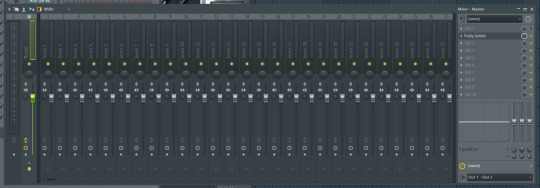
Okay so this is the mixer panel ^

Assign your Steinberg Virtual Guitarist 2 VST channel thing to one of the funny little numbers (we use 1 in this example)

Select the corresponding number in the mixing panel (1 in this example), it will be green-ish now, that means it's selected

Now on the right side of the mixer panel, look down

Look for this, this weird little greyed out clock with the (none), that's the chaos magic that makes time travel possible in FL Studio and it will take some time getting used to Basically, this thing can make your entire channel time travel to the past or future DURING LIVE PLAYBACK That's right, multi-timeline playblack, strap in, we're in for a ride
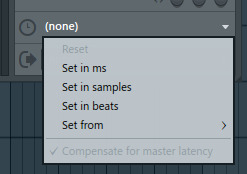
Click on that thingy, and you will see this menu There's multiple options for deciding your "time", personally, i prefer using miliseconds (ms), because it allows you to be the most precise (Note: the miliseconds option is NOT the best when you are composing a song that has shifting BPM's, if you are using BPM change events, then it is better to fiddle with the samples or beats settings, but this can be very annoying, good luck if this is the case!)

So here's the fun part, you will see this menu when you have clicked on the "Set in ms" thingy So, this will start with 0 of course, that means that it's synced with the main playback timeline

So, because you are "shifting your notes a bit to the left", it means that you are accounting for a delay issue, right? But what if you didn't have to do that? What if you could simply fix the delay by making the sound that the note plays /before/ the note plays? That's what this does! By using a negative value (such as -100), you are instructing the channel to play the note -100 miliseconds /before/ the note is triggered in the piano roll Of course, you will have to fiddle with the precise number, but this will make it so that you don't have to shift the note slightly to the left anymore, you can just place the note like you normally would in a normal synced piano roll, but you can do that! You know what to do now, the rest is up to you, use your feelings to find the right spot! 3. Other Tricks Okay so here's some other cool tricks with Virtual Guitarist 2
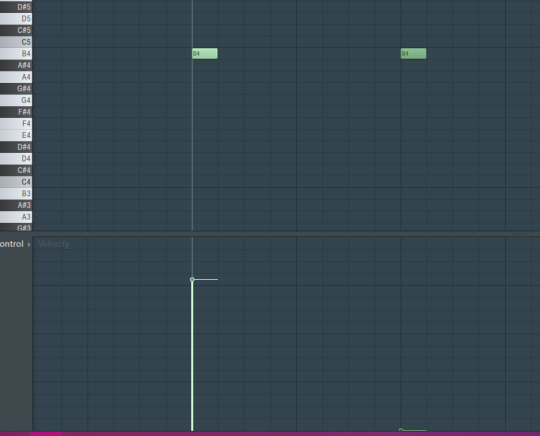
Do you see this? Usually, when you play a note in Virtual Guitarist 2, the note will keep "playing", like, it will keep "going", like a reverb tail But, if you place a note with 0 velocity after that, the long previous note will end automatically! To do this, you have to drag the little line in the velocity section of the piano roll (it's at the bottom) all the way down, all the way to the bottom Here's another cool trick:
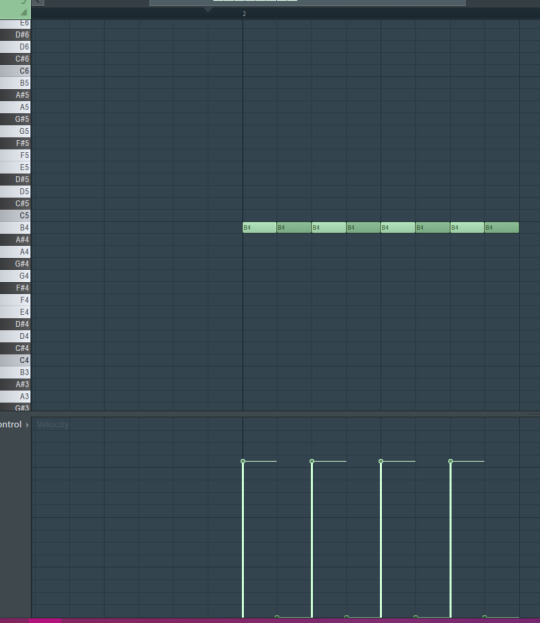
Okay so remember the previous trick? That won't work if you place the notes close together like this BUT
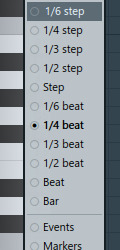
Go to this stupid little magnet thing on the top left of the piano roll, and change "1/4 beat" to something smaller (much smaller) like "1/6 step"

Now select all the notes
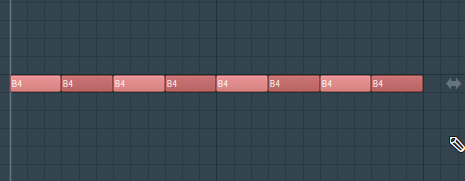
Now do this with your mouse Now, the notes WILL actually stop! Because there's a little small distance between them, this small change makes it so that the first note doesn't "go over" the second note, which makes the zero velocity data of the second note that you gave it trigger properly Okay there's one more cool secret trick

In the preset "Heavy Chords", starting from the 5th octave and going up from there, every note that is F#, G, or G# (and even more shit when you get to the 10th octave) gives you weird little effect sounds Soooooooo, if you wanna use this presets without automatically getting these effects, then shift down the octaves by using CTRL + down on your keyboard But these effects can be cool sometimes though of course!
youtube
For example, at 1:32 in Wonderful Heaven, you can hear one of those weird effects from the Heavy Chords preset used in the background (maybe it's difficult to hear, it's not that loud, but in my opinion it's a really cool detail in the song and it's part of what makes the song sound so iconic)
Anyways thank you for giving me an excuse to talk about Tenshi's theme again And yes, i found that Tenshi guitar sample simply by accident because i kept getting annoyed by accidentally triggering that effect until i discovered "wait a fucking second, is that the Tenshi guitar sample thing???" Anyways, i hope that was enough? If you have any other questions like these, feel free to send another ask, but please keep in mind it can take me a while to respond, because i prefer giving detailed answers when it comes to things i'm passionate about Have fun casually time travelling your music!
12 notes
·
View notes
Text

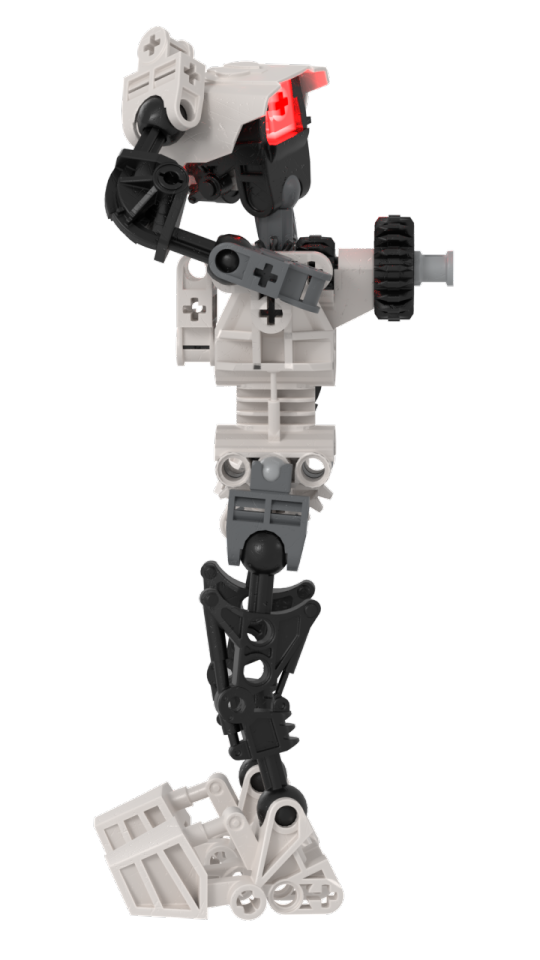

Krama, Toa of Twilight
teachings_draft_1.crn //: LOAD NEXT PASSAGE
Eighth lesson: To hone your inner light, you must accept your inner shadow. To control your inner shadow, you must remember your inner light.
log_231.de //: RESUME PLAYBACK
T: What are you looking over there for? V: I'm… reading what you wrote. The beginning of it anyways. T: By all means. I could use an editor I think. V: … T: … V: … Few regrets, hm? T: Few. Not none. V: … How is Krama doing, turaga? T: I… believe he is improving. Slowly. Did you get any results back from the Ghosts on his protodermis sample? V: Nothing that's useful. All they can say is that he has less light left than the others. They haven't figured out how much yet. T: As if we didn't know that already. V: How exactly is he improving? Is his mental state more stable? T: Like I said, slowly. I think the new thoughts he's been dealing with since the procedure frighten him. But it's hard to tell with the way he expresses his emotions being so muted now. V: And his elemental powers? Has he regained some control of them? T: No. V: … T: … V: Is that thing you were telling me about with his mask still happening? T: Yes… It's strange. We focus on practicing his kanohi use most of the time because I think it's grounding for him. To still have at least one toa-like thing he can do. But the things he can do with that mask… V: You've worked with the first Toa Nuva, aren't you accustomed to strong kanohi powers? T: Even Artahka's kanohi Nuva don't match the level of power that that toa seems to be able to draw forth from a simple great mask. V: … Turaga, that kind of power with a Komau- T: I know. Sometimes I fear it will become dangerous enough that he'll turn away from even this in fear of what he might be capable of. V: Maybe we should get him a different mask to use. Something more positive. T: I've tried that. It doesn't even work with a different Komau. It has to be the one he's worn all his life. V: Really? Why? T: … I don't know. I've examined the mask in and out and it's unchanged. It's just a normal kanohi. V: … T: … V: The others worry about him, Turaga. T: I know. V: They try not to show it, but I can tell. They… they were expecting him to lead them. T: He did. He led them in his bravery, in being the first to undergo our… V: Our experiment. T: … V: Turaga, the future students that you're writing this chronicle for… do you plan to have them all drain some of their light? Once we're sure the process is perfected? T: … No, I think not. For certain we've seen that the procedure grants great power… V: … Control over two elements alone is incredible, let alone two of the most powerful… T: Yes, but to change oneself in such a way… I do not intend to push that upon anyone. The students may come and they may learn our ways, just as you learned them from me. There's no need for them to undergo such a drastic change. Unless they… seek to make such a sacrifice of their own volition, and with an understanding of what it means. V: Like these ones did. T: Yes. These students are… a very special team. I am not sure I can ever be grateful enough to their commitment to this project, even knowing what they risked. V: They did gain great power, turaga. T: And a heavy burden of duty. You know that. V: Yes. T: … V: … I should go to bed. Training will be hard tomorrow. T: As always. V: Yes. T: Goodnight, Viama. V: Goodnight, Turaga Tanma.
log_231.de //: CLOSE teachings_draft_1.crn //: CLOSE LOGOUT
42 notes
·
View notes
Text
Retro Analog Video Noise Effects - applied to processed footage of a UTE Fire Dance. [turn on audio]
More about the processing: I recently came across a FB Reel post by the artist VJ Kuru who does a lot of live performance work processing with his custom Touch Designer networks. In this post he mentions that he was able to create a video glitch network with only 5 TD nodes. (Actually, if you exclude the required video input node and the optional Null output node, he got his glitch effect with only 3 TD nodes- Noise, Displace, and Composite TOPS...)

I was intrigued and so decided I would try to figure this puzzle out -- his Reel showed only the most basic info, but I could see the set of nodes he used, as well as his manipulation of the NOISE TOP's amplitude parameter. So that was my starting point. And after several hours of messing around, I finally found some (rather extreme) settings on the Noise TOP that essentially replicated his shifting wavy bands of raster & chroma distortion effect.
This got me playing around with simulating other sorts of analog tape-like distortions. Over the course of the afternoon, I added vertical roll distortion, tape dropout noise, and static like from dirty VCR playback heads (or a badly tuned TV set). Here is a snapshot of the TD network I ended up with (obviously much larger than a 5 node solution...):

Some examples of my retro analog video processing network based upon found footage of the Golden Butoh (Daidogei) Dance Troupe from Japan can see viewed on my art blog:
Video Distortion FX - retro video
http://www.image-maya.org/2025/05/video-distortion-fx-retro-video.html
Further examples of this network in use (on my art blog):
Video Noise Distortion - retro video - a few more samples
http://www.image-maya.org/2025/05/video-noise-distortion-retro-video-few.html
#artists on tumblr#glitch#glitch art#video#video artist#mg#video art#image processing#markgee85#Touch Designer#digital processing#analog video noise#video distortion#UTE Fire Dance#Golden Butoh#VJ Kuru
3 notes
·
View notes
Text
Curiously, the apotheosis of the record as an instrument—as the raw material of a new creation—occurred just as the gramophone record itself was becoming obsolete and when a new technology that would surpass the wildest ambitions of any scratcher, acousmaticist, tape composer or sound organiser was sweeping all earlier record/playback production systems aside. Sampling, far from destroying disc manipulation, seems to have breathed new life into it. It was almost as if sampling had recreated the gramophone record as a craft instrument, an analogue performing instrument made authentic by nostalgia.
Obsolescence empowered a new mythology for the old phonograph, completing the circle from passive repeater to creative producer; from dead mechanism to expressive voice; from the death of performance to its guarantee. It is precisely the authenticity of the 12-inch disc that keeps it in manufacture. It has become anachronistically indispensable.
- Chris Cutler, Not As We Choose
36 notes
·
View notes
Text
The path is clear, as always, and the plane remains where it was, old and untouched. She feels her hand ache terribly at the sight of it, but Jackie tries to ignore it, clenches her fist. She walks closer to the middle of the runway until she’s standing right where everything started all over again. The spot where she traded her blood for a chance to relive her life again. “I’m here.” Again. Like yesterday. She hopes this time their talk is quicker. She doesn’t want to miss nearly an entire day lest it’d become a noticeable pattern by the rest of the group. Jackie was lucky then, to have found Nat when she did. It made the fabricated story she had told Shauna more tangible. She doesn’t like how lying to Shauna is becoming easier. The wind picks up, and the fallen leaves rustle as they begin to get carried along by the gale. It’s reminiscent of that night of their attic slumber party, except this time the current is strong, but gentle. It’s more a reciprocated greeting from the unknown benevolent, rather than the domineering pull of the malevolent. “Punctual, are you?” The Voice echoes inside her head. It’s different compared to speaking to them in their home or realm or whatever, it’s far more contained than the chorus she’s heard from their last encounters. She’s played with voices in her head, hears her own voice and sometimes other people too, but unlike it, this Voice is completely and wholly divorced from the scripted agency she gives the characters inside her mind. It quite literally is just an independent neighbor living rent free. It’s weird. But, weird is better than dangerous.
Yippee kay yay \o/ a small sample of ch 8 of playback
4 notes
·
View notes
Text

(1992) NHK Taiga Drama Taiheiki
confusingly just called "Taiheiki" sometimes?
this is the PCE game. it has sample playback. it's p alright. it sounds a bit like how it looks
2 notes
·
View notes
Note
Now im curious, if you could, would you ever play these through actual like. Midi hardware? Old sound cards with wavetable synths, actual opl3 cards, etc?
that's the thing about it. this software and soundfonts perfectly duplicates the output from the hardware I actually have - and the other soundfonts are for hardware that costs hundreds to thousands of dollars lol. or they're things that do not actually accept arbritrary midi input (genesis, sm64, earthbound, undertale, the one that attempts to perform synthesis of instturments using samples of things an NES can play)
like i could force my isa sound blaster to ignore its wavetable card and do opl3 synthesis for general midi - but I already have a soundfont produced from sampling what the sound blasters do for opl3 synthesis for those instruments and it sounds identical lol. the only thing I'd get out of going through the trouble of moving stuff to the 486 to play through it would be a bit of extra noise incurred via the patch cable and the kinda mediocre line in on my modern laptop! and that thing can only play in real time while the timidity software renders out the uncompressed audio roughly ~5x to ~30x realtime playback speed, depending on complexity of the midi & the soundfont used
though hey if someone wants to donate all the cash/actual hardware to get weird with it and hook all the now quite rare and pricey modules and cards up i wouldn't mind. but i'd need a second 486 desktop just to fit them too!
20 notes
·
View notes